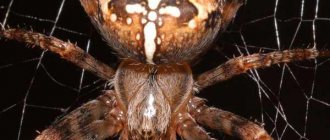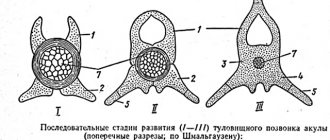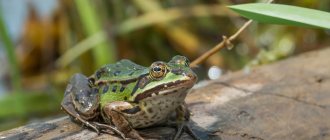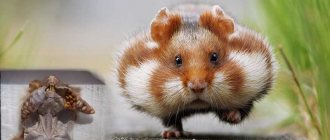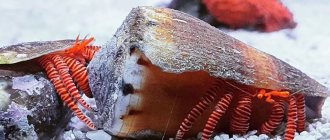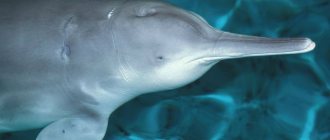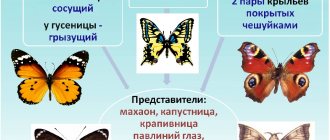Crustaceans appeared about 545 million years ago, long before mammals. Despite their ancient origins, they still have a wide diversity of species and occupy an important niche in the food chain. There are a great many representatives of this class, they all have common features. To consider crustaceans, you can study the structure of crayfish, a representative of a class that is quite widespread in Russia.
There are a great many representatives of the class of crustaceans, they all have common features
Characteristic signs of crustaceans
Like all arthropods, the structure of the crayfish (the figure below demonstrates it) is represented by a segmented body and limbs. These are the head, chest and abdomen. The body segments bear paired limbs consisting of individual segments. They are capable of performing quite complex movements. The jointed limbs are usually attached to the thoracic segments of the body. The external structure of crayfish fully corresponds to the characteristic features of arthropods.
Lifestyle
Of all the variety of crustaceans, only wood lice preferred life on land to life in water. Different types of crustaceans have an individual lifestyle.
Shrimps, primitive crustaceans and branchiopods have given up their existence to the will of the current, which carries them in different directions. Such as sea acorns lead a sedentary lifestyle, never leaving the water.
Carp lice and other parasitic crustaceans live and feed at the expense of the host. Some crayfish lead an almost immobile lifestyle, attaching themselves to rocks, shells, whales and sharks.
Habitat
Crayfish can be found in fresh water bodies. Moreover, their presence can be considered an indicator of its environmental safety. After all, these animals prefer reservoirs with clean water and high oxygen content. The structure of crayfish determines their ability to crawl with the help of walking legs or swim. During the day they are in natural shelters. At night they crawl out of holes, from under stones and logs. At this time they are looking for food. In this regard, crayfish are not picky. They are generally omnivores. Worms, fry, tadpoles, mollusks, algae - all of them will appeal to crayfish. They do not disdain dead organic matter. If you decide to keep this animal in your home aquarium, not only special food is suitable for food, but also meat, vegetables and bread. However, it will be quite difficult to maintain the purity of the water.
Life cycle
The structure of crayfish is closely related to seasonal phenomena and the crayfish’s lifestyle. As daylight hours decrease, their activity begins to decline. Their breeding process begins in the fall. These are animals with external fertilization, so the eggs are attached to the abdominal legs of the female. This is how crayfish show care for their offspring, in which they spend the entire autumn and winter. At one time, the female releases up to 600 eggs, which she carries for six months.
With the onset of cold weather, crayfish descend deeper and lead a sedentary lifestyle. Larvae from eggs appear only in summer. Externally, they are an exact copy of adults. This type of development is called direct. During this period, crayfish gather in coastal areas. This happens because the final stage of development of fertilized eggs requires special conditions. These include higher temperature and oxygen levels.
So, in our article we looked at the structure of crayfish and the features of its life activity. Its main features include:
— aquatic habitat;
- body of cephalothorax and abdomen;
— 19 pairs of limbs that allow crayfish to walk along the bottom, swim, hunt, hold food, and defend themselves from enemies;
- mixed body cavity;
- excretion of metabolic products through green glands;
- presence of a heart, open circulatory system;
- nodal type nervous system;
- dioeciousness, external fertilization, direct development.
The structure of crayfish, which is a representative of the arthropod phylum, is associated with its habitat. This is a typical inhabitant of fresh water bodies that breathes using gills. This article will look at crayfish. The structure, pictures, habitat and features of life are presented to your attention below.
External structure of crayfish
The body of crayfish consists of two parts. These are the cephalothorax and abdomen. The front part is covered with the so-called shell. The abdomen consists of separate segments, on top of which are small scutes. The cephalothorax also contains two pairs of antennae, mouthparts, and five pairs of walking legs. Each of them performs specific functions. For example, the first pair ends with powerful claws, used to grab food, tear it into pieces and protect it from enemies.
Six pairs of limbs are attached to the abdomen. The last pair of legs is expanded and, together with the anal plate, forms the caudal fin. In appearance it resembles a fan. With the help of the anal fin, crayfish swim quite quickly with their back end first. Collectively they have 19 limbs.
Reproduction
Dioecious crustaceans reproduce sexually. Sexual dimorphism is noted. The female's abdomen is much wider than that of the male, and the cephalothorax is narrower.
At the end of winter, the female lays fertilized eggs on the underside of her abdomen and carries them until the larvae (crustaceans) appear. The female has to constantly drive water by bending her tail. This is necessary to saturate the eggs with oxygen.
Crustaceans on the abdominal legs of a female
In the first days of summer, crustaceans hatch from eggs, which remain on the mother’s abdomen for 10-12 days of life, after which they become independent individuals.
Coverings of the body
The structural features of crayfish are primarily determined by its cover. Like all arthropods, it is represented by a cuticle, which forms a powerful exoskeleton. It is given additional hardness by the calcium carbonate with which it is impregnated.
Since the cuticle is not capable of stretching, the growth of crayfish is accompanied by periodic molting. This period is critical in the life of these aquatic inhabitants. A few days before this, the crayfish become restless, stop feeding, and spend all their time looking for shelter. With the help of intense movements of the body and limbs, they get rid of the old cover, from which they crawl out through a gap at the border of the cephalothorax and abdomen. The crayfish remain in their safe shelter for up to ten days until the new cuticle hardens.
Life activity
The common freshwater crayfish, well known to everyone since childhood, is a bottom-dwelling animal. As a rule, it moves along the bottom on walking legs with its head forward. However, in case of danger, making quick movements with its tail, it swims back.
At first glance, it is difficult to distinguish a female crayfish from a male, but if you look closely, you will notice that in females the abdominal segments are much wider than the head-thorax, and in male crayfish, the abdomen, on the contrary, is narrower than the head-thorax.
In the last winter month, the female spawns eggs, which are attached to the legs of the abdomen. In this place, the eggs ripen until the beginning of summer, when small crustaceans begin to hatch, which are under the belly for the first one and a half to two weeks, and then begin their own life activities.
Female with caviar
The cover of chitin is very hard and practically does not stretch, as a result of which the development of young crustaceans occurs in stages. When the crustacean becomes crowded in the previous cover, it lags behind the body and a new one begins to form under it. This process is called molting, i.e. the old shell is destroyed, and a crustacean emerges from it, which is covered with not yet hardened and transparent chitin. The cancer begins to grow, and the chitin begins to become saturated with limestone and harden. After this, the crustacean stops growing until a new molt begins.
Internal structure of crayfish
During embryonic development, a secondary body cavity is formed in all arthropods. But it does not persist throughout the animal’s life. In the process of individual development, this structure is destroyed, merging with the remains of the primary one and forming a mixed cavity. The spaces between the organs are filled with a fatty body in crustaceans. This is a type of loose connective tissue that performs important functions: storing nutrients, forming blood cells, protecting against mechanical damage.
How does cancer breathe?
The respiratory system consists of gills. The oxygen present in the water enters the blood through the gill plates, and carbon dioxide is removed from it through the respiratory organs. Thus, gas exchange occurs. Oxygen-rich blood enters the heart through holes in it.
Major organ systems
The internal structure of crayfish is represented by quite complex organ systems. Digestive - through-type, with the presence of the liver and salivary glands, which secrete enzymes that break down nutrients. The final products of metabolism are removed from the body using the excretory system, represented by the Malpighian vessels.
The respiratory organs of crayfish are determined by its aquatic habitat, these are gills. The circulatory system is closely connected with them. She is not closed. Blood vessels open into the body cavity, mix with its fluid, forming hemolymph. It transports oxygen, carbon dioxide, nutrients, and metabolic products.
The most important function of hemolymph is protective. It contains specialized cells that carry out amoeboid movements, capture pathogenic microorganisms with pseudopods and digest them. The movement of hemolymph throughout the body is ensured by a pulsating thickened vessel - the heart. Since the blood mixes with the cavity fluid and is not divided into arterial and venous, crayfish is a cold-blooded animal. This means that his body temperature decreases as the environment gets colder.
At the end of autumn, crayfish begin to reproduce. These are dioecious animals with direct development and external fertilization. The male has a testis and two vas deferens, the female has an ovary and paired oviducts. After fertilization, the eggs are located on the abdominal legs of the female. This is how she shows her maternal instinct, taking care of her future offspring. At the end of spring or early summer, young crustaceans emerge from them, which are an exact copy of the adults.
The nervous system is also quite complex. It consists of differentiated sections: anterior, middle and posterior. The first regulates the functioning of the eyes, provides complex behavioral reactions of these animals, the rest innervate the antennae. The brain is anatomically connected to the ventral nerve cord, from which individual nerve fibers extend throughout the body.
Digestive and excretory organs
The digestive system has a rather complex structure. From the mouth, food enters the pharynx, then into the esophagus, and then into the stomach, which has two sections. Both parts of the stomach work harmoniously:
- at first the food is in the first large compartment. Here, with the help of chitinous teeth, food is ground;
- further, in the second section, the crushed food is filtered through a filter apparatus.
After the stomach, food enters the intestines, then into the digestive gland. Here the contents are digested and the resulting nutrients are absorbed. What is not digested comes out through the anus. It is located in the caudal fin.
The excretory system consists of one pair of green glands that open near the antennae. Through them, toxic waste products of the animal are removed.
Fig.2. Internal organs of crustaceans
Meaning in nature and human life
Young crayfish form plankton in fresh water bodies - an important link in the food chain. By using dead animals as food, they cleanse their habitat. Recently, due to the negative influence of humans, the number of crayfish populations has sharply decreased. In dirty water, the offspring of crayfish will inevitably die. This is also due to the important commercial significance of this representative of arthropods. After all, crayfish meat is a valuable food product, and in some regions even a delicacy. It is rich in proteins, vitamins and microelements. Crayfish is the largest representative of the class that lives in fresh water bodies. To preserve this species in nature, their fishing is officially prohibited until mid-summer.
The structure of crayfish is largely determined by its habitat and determines its importance in nature and human life.
Internal organization
The internal structure of crustaceans perfectly illustrates the structure of crayfish. There are no significant differences between representatives of this class.
Digestive tract
The digestive system of crayfish consists of anterior, posterior and middle sections. The first consists of the mouth, jaws, esophagus, and the chewing stomach (designed for grinding food). The middle section consists of the following organs:
- midgut with ducts from the liver;
- filter stomach - the inside of the organ is covered with chitinous hairs that allow only finely ground food to pass through.
The middle section of the intestine smoothly passes into the hind intestine and ends with the anus. In the cancer body, the liver functions as a digestive gland. It secretes special enzymes that break down not only fats, but also proteins and carbohydrates. All nutrients are absorbed in the middle intestine.
Respiratory and excretory organs
Since crayfish live in bodies of water, the animals have characteristic respiratory organs - gills. They are located in the back area and are covered with a chitinous shield. Gills are projections on the limbs used for locomotion, as well as on the jaws. Oxygen dissolved in water enters the bloodstream through the gills and is distributed to all tissues of the body. Carbon dioxide, in turn, is released into the environment. The animal cannot stay on land for a long time. As soon as the gills dry out, the individual is unable to breathe and dies.
The animal exists in the water element and does not need to conserve liquid. That is why, unlike land arthropods, crayfish do not have Malpighian vessels. The excretory organs of this creature are represented by green glands. They are located at the base of the long mustache. Each excretory organ consists of two elements:
- green gland;
- Bladder.
It’s worth finding out in a little more detail what role they play. At the base of the green gland there is a coelomic sac, which collects harmful waste products from the entire body. They enter the bladder through the glandular canal and are then expelled through the excretory pore.
Nervous and circulatory systems
The nervous system of the individual consists of the suprapharyngeal node, which acts as the brain, the peripharyngeal ring, the subpharyngeal node and the ventral nerve chain. The subpharyngeal and suprapharyngeal nodes are connected by a large number of nerve fibers, which form the subpharyngeal ring.
Like all arthropods, crayfish have a lacunar or open circulatory system. It should be said right away that in cancer, instead of blood, a special liquid circulates through the vessels - hemolymph , which has a bluish tint. From the arteries it simply pours into the internal cavity of the body and washes all organs and tissues. Then the hemolymph again enters the vessels. The cardiac muscle of cancer has the shape of a pentagon and is surrounded by the pericardium - the pericardial sac.
The heart is pierced by slits called ostia. During muscle contraction, they close and hemolymph moves into the arteries. When the heart relaxes, the ostia open to allow blood to return to the organ.
Features of reproduction and significance in nature
Cancers are dioecious creatures. External distinctive features between males and females are present, but rather weakly expressed. Females are slightly larger than males. In addition, they have a wider abdomen. In females, the first pair of abdominal limbs is absent. The fusion of eggs with sperm occurs inside the female’s body.
During the mating season, the male introduces a spermatophore, a sac containing seminal fluid, into the female genitals. After two or three weeks the female spawns her eggs . At the same time, it dissolves the spermatophore membrane, which results in the fusion of male and female germ cells.
Many types of crustaceans are consumed by humans. Small representatives of this class serve as food for various animals. Crayfish occupy an important place in the ecology of the planet's biosphere. They eat the bodies of dead animals, thereby purifying the pond. If you have to write a report on a topic, then you should include pictures with captions.


